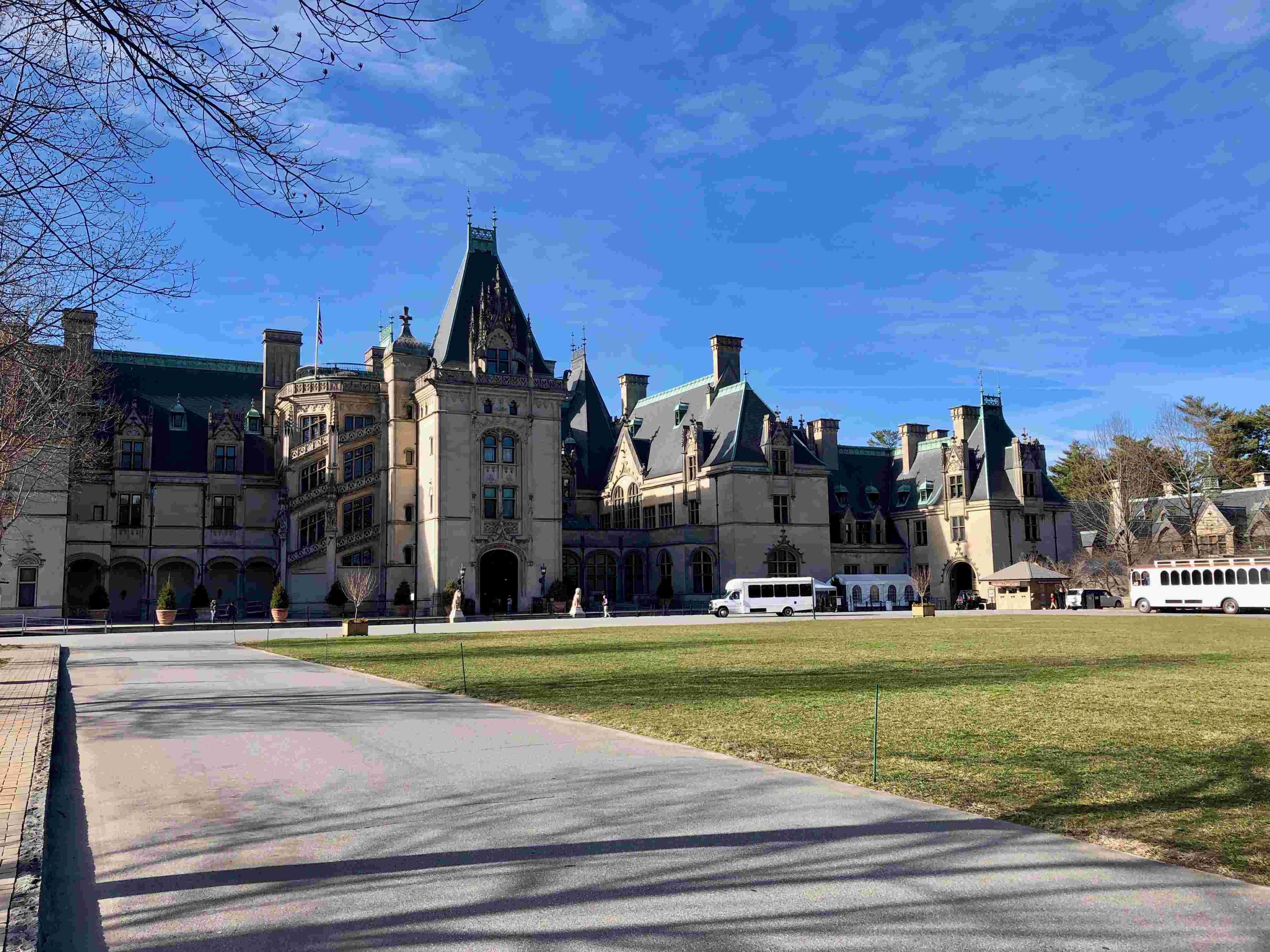The Biltmore Estate, America’s largest privately owned home, has been owned and managed by the Vanderbilt family since its construction in 1895. Built by George Washington Vanderbilt II, grandson of railroad magnate Cornelius Vanderbilt, the estate has remained in the family for generations. Today, it is managed by Bill Cecil Jr., great-grandson of George Vanderbilt, continuing the family’s legacy of preserving this architectural marvel and its surrounding lands.
Who Was the Original Owner of the Biltmore Estate?

George Washington Vanderbilt II, born in 1862, was the visionary behind the Biltmore Estate. As the youngest child of William Henry Vanderbilt and grandson of Cornelius Vanderbilt, George inherited a substantial fortune. He used this wealth to fulfill his dream of creating a grand country estate in the Blue Ridge Mountains of North Carolina.
Key facts about George Vanderbilt:
- Born: November 14, 1862
- Died: March 6, 1914
- Began construction of Biltmore Estate: 1889
- Officially opened Biltmore House: Christmas Eve, 1895
- Married Edith Stuyvesant Dresser in 1898
- Had one child: Cornelia Vanderbilt, born in 1900
How Did the Biltmore Estate Remain in the Vanderbilt Family?

The Biltmore Estate has remained in the Vanderbilt family through several generations:
- George Washington Vanderbilt II (1862-1914)
- Edith Vanderbilt (1873-1958) – George’s wife, managed the estate after his death
- Cornelia Vanderbilt Cecil (1900-1976) – George and Edith’s daughter
- William Amherst Vanderbilt Cecil Sr. (1928-2017) – Cornelia’s son
- William A. V. Cecil Jr. (Bill Cecil Jr.) – Current CEO of The Biltmore Company
This lineage has ensured that the estate remains true to George Vanderbilt’s original vision while adapting to modern times.
What Are the Key Features of the Biltmore Estate?
The Biltmore Estate is renowned for its grandeur and architectural significance. Here are some of its most notable features:
- Size and Scale
- 250 rooms
- 178,926 square feet of floor space
- 780-foot façade
-
8,000 acres of grounds
-
Architectural Style
- French Renaissance chateau design
- Architect: Richard Morris Hunt
-
Inspired by Loire Valley châteaux in France
-
Unique Amenities
- 65 fireplaces
- Indoor swimming pool
- Bowling alley
-
Gymnasium
-
Gardens and Grounds
- Designed by Frederick Law Olmsted
- 4-acre Walled Garden
- All-American Rose Garden
- Extensive walking trails
How Has the Biltmore Estate Evolved Over Time?
The Biltmore Estate has undergone several changes since its construction:
| Year | Event |
|---|---|
| 1895 | Official opening of Biltmore House |
| 1914 | George Vanderbilt’s death; Edith takes over management |
| 1930 | Estate opens to the public during Great Depression |
| 1956 | Biltmore House ceases to be a family residence |
| 1963 | Designated a National Historic Landmark |
| 2001 | The Inn on Biltmore Estate opens |
| 2010 | Antler Hill Village and Village Hotel open |
Despite these changes, the Vanderbilt family has maintained a commitment to preserving the estate’s historical integrity and natural beauty.
What Role Does the Biltmore Estate Play Today?
Today, the Biltmore Estate serves multiple purposes:
- Tourist Attraction: As America’s largest private residence, it draws millions of visitors annually.
- Historical Preservation: The estate maintains its historical significance through careful restoration and conservation efforts.
- Educational Resource: It offers insights into Gilded Age architecture, art, and lifestyle.
- Economic Driver: The estate is a major employer and economic contributor to the Asheville area.
- Environmental Stewardship: The Biltmore Company continues to prioritize conservation of the estate’s natural resources.
How Can Visitors Experience the Biltmore Estate?
Visitors to the Biltmore Estate can enjoy a range of experiences:
- Self-guided tours of Biltmore House
- Guided tours of gardens and grounds
- Specialized tours (e.g., Rooftop Tour, Behind-the-Scenes Tour)
- Accommodations at The Inn on Biltmore Estate or Village Hotel
- Dining at various on-site restaurants
- Wine tasting at Biltmore Winery
- Outdoor activities like hiking and horseback riding
The estate is open year-round, with admission prices varying by season and tour type. Visitors are advised to check the official website for current information on hours, pricing, and available amenities.
In conclusion, the Biltmore Estate, America’s largest home, was owned and continues to be managed by the Vanderbilt family. From its inception by George Washington Vanderbilt II to its current management under his great-grandson Bill Cecil Jr., the estate has remained a testament to the family’s vision, wealth, and commitment to preservation. As both a historical landmark and a modern tourist destination, the Biltmore Estate continues to captivate visitors with its grandeur and beauty, while maintaining its status as a cherished family legacy.
References:
1. https://en.wikipedia.org/wiki/The_Biltmore_Company
2. https://en.wikipedia.org/wiki/Biltmore_Estate
3. https://www.romanticasheville.com/biltmorececil.htm
